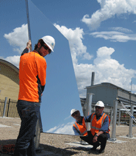By Rich Bowden
It’s a no-brainer right?
Australia is one of the most blessed countries in the world with regard to availability of solar power and solar intensity. We, along with the United States, are considered to have the greatest potential for the exploitation of solar energy in the world. So why has domestic policy not taken advantage of this? Why are governments, both state and federal, backpedalling from supporting solar energy initiatives?
This was the conundrum most recently outlined by the Clean Energy Council in their report released last week in their (unimaginatively named) Large scale< Solar Energy Roadmap).
“Australia has the highest average solar radiation per square meter of any continent in the world, yet to date we have not capitalised on the potential benefits of large-scale solar,” said the report. “The uptake and deployment of solar energy technologies globally remains dependant largely on domestic policy settings.”
Having witnessed the winding down of renewable energy schemes such as the feed-in tariff bonus scheme in many states, solar energy industry is now looking to large scale projects as the future.
However in an interview with the National Interest’s Peter Mares, chief executive of the Clean Energy Council Matthew Warren admitted that we have fallen behind other countries such as Spain and the United States. He said it was time we “become serious” over solar energy.
He added there was considerable “frustration” over the stop start research and development in solar technology pointing to the delay in allocating funding through the Solar Flagship program as an example.
Lack of a stable political environment is pointed to in the roadmap as one of the major issues facing the growth of large scale solar projects. Interestingly, Mr Warren explained that it was the banks who were the usual final arbiters of whether or nor major solar projects went ahead. If they felt there was enough stability in the political climate over a number of years, funds would indeed be released. Conversely if there was uncertainty, funding would be less likely to be forthcoming.
One of the key recommendations in the Council’s roadmap was that “Australia must create a stable and consistent policy environment to attract investment and capitalise on the growth of an international market.”
Is this achievable though with a vacillating federal government and the very real possibility of the next government being formed by a leader who has described climate change science as “crap”?
Your thoughts?
Download the the roadmap here.


 RSS - Posts
RSS - Posts



Speak Your Mind